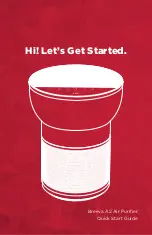
4
3. Installing the indoor unit
4. Refrigerant pipe
90
°
±
0.5
°
ø
A
R0.4~R0.8
A
45
°±
2
°
B
Fig. 4-1
4.1. Connecting pipes (Fig. 4-1)
• When commercially available copper pipes are used, wrap liquid and gas pipes
with commercially available insulation materials (heat-resistant to 100 °C or more,
thickness of 12 mm or more).
• The indoor parts of the drain pipe should be wrapped with polyethylene foam insu-
lation materials (specific gravity of 0.03, thickness of 9 mm or more).
• Apply thin layer of refrigerant oil to pipe and joint seating surface before tightening
flare nut.
• Use two wrenches to tighten piping connections.
• Use refrigerant piping insulation provided to insulate indoor unit connections. Insu-
late carefully.
C
B
A
Flare cutting dimensions
Copper pipe O.D.
Flare dimensions
(mm)
øA dimensions (mm)
ø6.35
8.7 - 9.1
ø9.52
12.8 - 13.2
ø12.7
16.2 - 16.6
ø15.88
19.3 - 19.7
ø19.05
22.9 - 23.3
B
Refrigerant pipe sizes & Flare nut tightening torque
P20/25/32/40
Flare nut O.D.
Liquid
Gas
pipe
pipe
(mm)
(mm)
17
26
R410A
Liquid pipe
Gas pipe
Tightening
Tightening
Pipe size
torque
Pipe size
torque
(mm)
(N.m)
(mm)
(N.m)
O.D. ø6.35 (1/4”)
14 - 18
O.D. ø12.7 (1/2”)
49 - 61
R407C or R22
Liquid pipe
Gas pipe
Tightening
Tightening
Pipe size
torque
Pipe size
torque
(mm)
(N.m)
(mm)
(N.m)
O.D. ø6.35 (1/4”)
14 - 18
O.D. ø12.7 (1/2”)
49 - 61
2) For right downward or left downward piping (Fig. 3-8)
(The following figure is a view of the bottom of the indoor unit from above.)
A
When the unit is installed on the wall.
B
When the unit is installed on the floor.
C
Apply refrigerating machine oil over the entire flare seat surface.
4.2. Refrigerant piping
4.2.1. Connecting pipe installation
Install the connecting pipes so that the piping can move slightly to the front, back, left,
and right. (Fig. 4-2)
150
168
200
73
105
147
60
700
75
62
31
61
;;;
;;;;;
;;;;;;;;
;;;;;;;;;
;;;;;;;;;
;;;;;;;
;;;;
;;;
;;
;;;;;
;;;;;
;;;;;
;;;;;;
;;;;;
;;;;;;
;;;;;
;;;
;
A
B
Fig. 3-8
60
19
60
19
60
60
Fig. 3-10
Fig. 3-9
2)
4)
3)
Fig. 4-2
3) For left piping (Fig. 3-9)
4) For right piping (Fig. 3-10)
3.4.3. Sealing the holes
Use putty or a caulking compound to seal the holes.





































